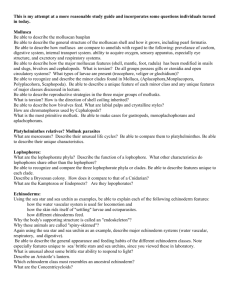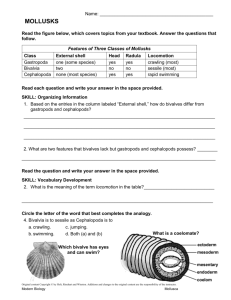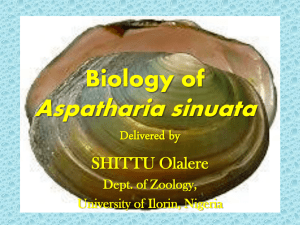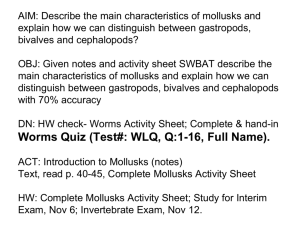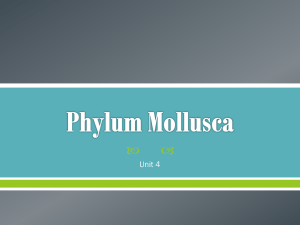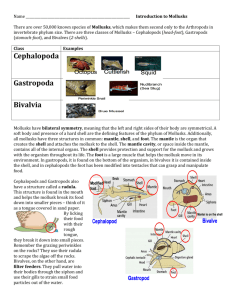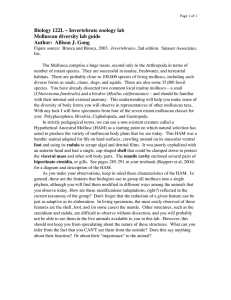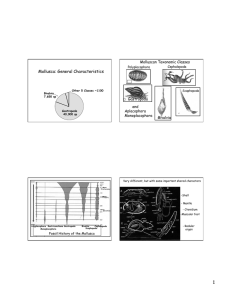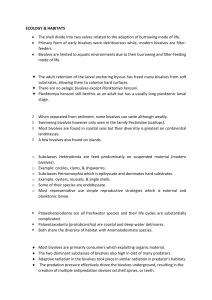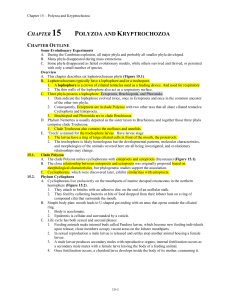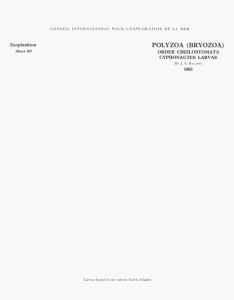Study guide
advertisement
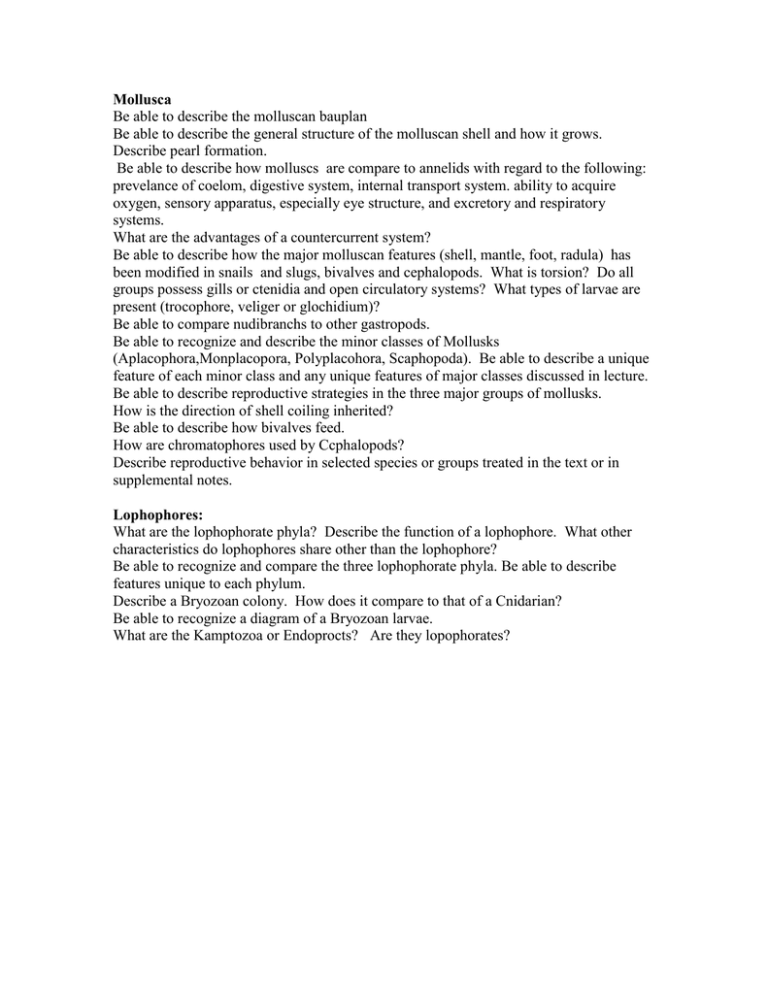
Mollusca Be able to describe the molluscan bauplan Be able to describe the general structure of the molluscan shell and how it grows. Describe pearl formation. Be able to describe how molluscs are compare to annelids with regard to the following: prevelance of coelom, digestive system, internal transport system. ability to acquire oxygen, sensory apparatus, especially eye structure, and excretory and respiratory systems. What are the advantages of a countercurrent system? Be able to describe how the major molluscan features (shell, mantle, foot, radula) has been modified in snails and slugs, bivalves and cephalopods. What is torsion? Do all groups possess gills or ctenidia and open circulatory systems? What types of larvae are present (trocophore, veliger or glochidium)? Be able to compare nudibranchs to other gastropods. Be able to recognize and describe the minor classes of Mollusks (Aplacophora,Monplacopora, Polyplacohora, Scaphopoda). Be able to describe a unique feature of each minor class and any unique features of major classes discussed in lecture. Be able to describe reproductive strategies in the three major groups of mollusks. How is the direction of shell coiling inherited? Be able to describe how bivalves feed. How are chromatophores used by Ccphalopods? Describe reproductive behavior in selected species or groups treated in the text or in supplemental notes. Lophophores: What are the lophophorate phyla? Describe the function of a lophophore. What other characteristics do lophophores share other than the lophophore? Be able to recognize and compare the three lophophorate phyla. Be able to describe features unique to each phylum. Describe a Bryozoan colony. How does it compare to that of a Cnidarian? Be able to recognize a diagram of a Bryozoan larvae. What are the Kamptozoa or Endoprocts? Are they lopophorates?
